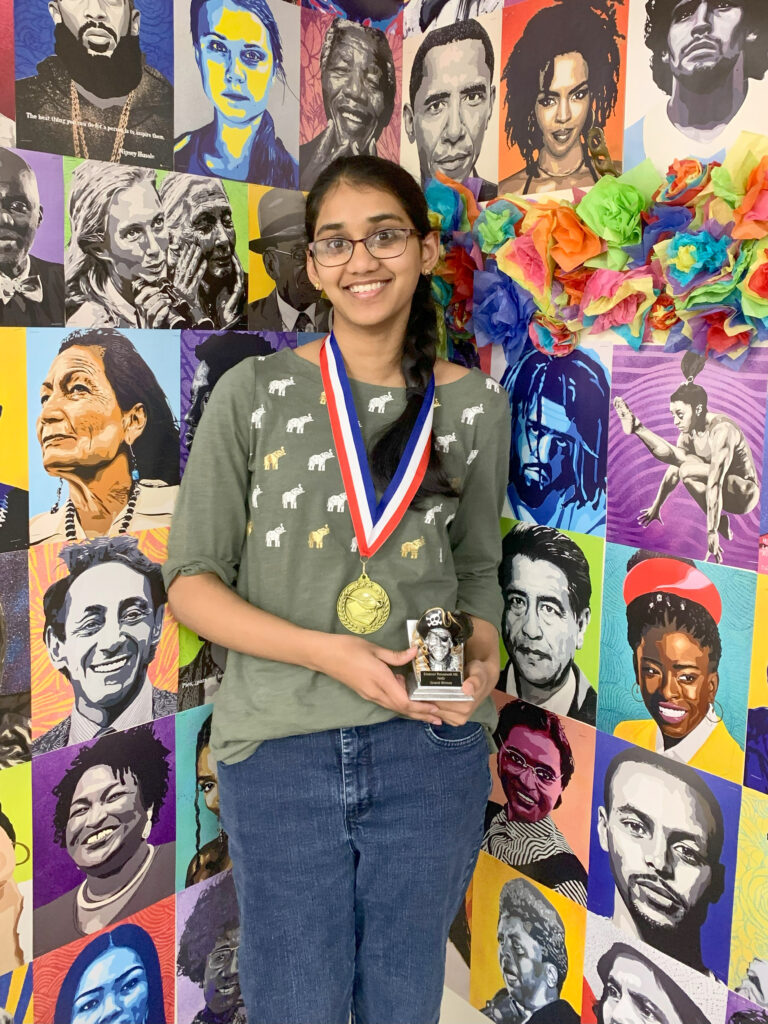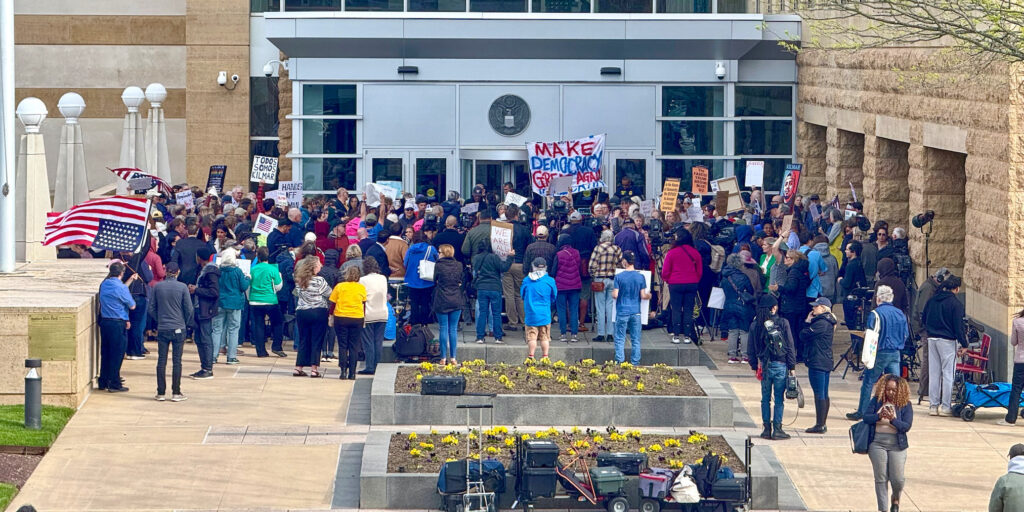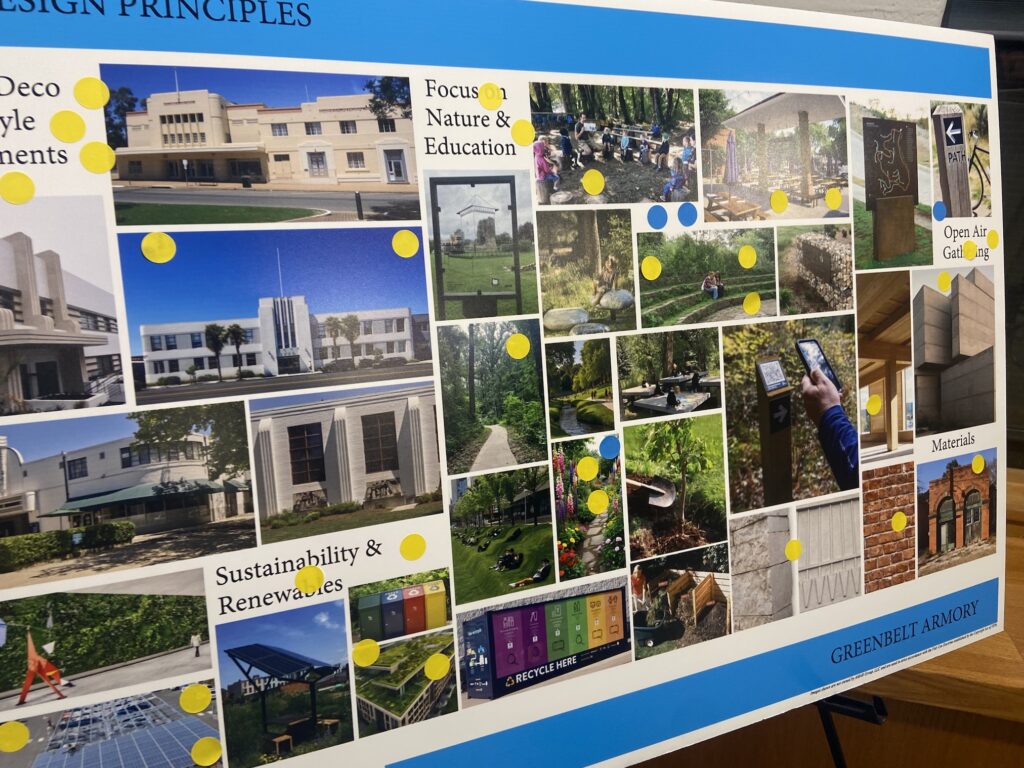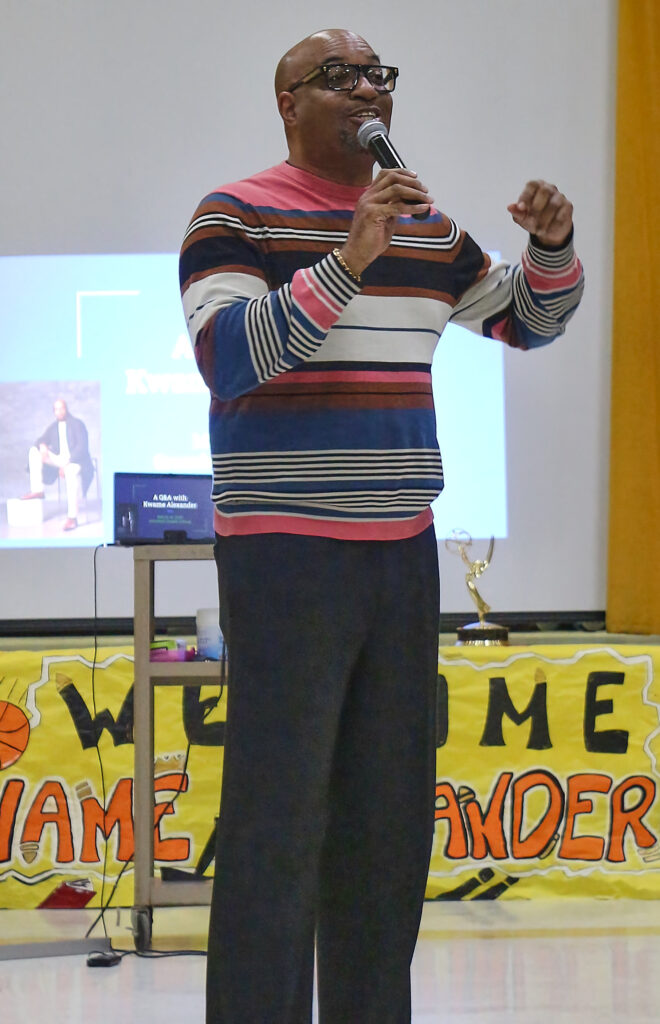Students at Eleanor Roosevelt High School (ERHS) participated in a National History Day competition for the first time in more than 10 years. The local event took place on January 31 after being postponed by snow from its originally scheduled date of January 17. Led by ninth-grade U.S. history teacher Victoria Patch-Williams and Judith Barrera, who teaches African American studies and government, students developed projects under the 2024 national contest theme, Turning Points in History. The National History Day contest was started in 1974 so this is its 50th year (see nhd.org for more information).
History Day Projects
Students choose a topic that fits into the national theme, conduct original research on the topic and create a project to present their findings in one of five formats: paper, performance, documentary, exhibit or website; each format has a set of rules, which must be strictly adhered to. Papers must be prepared individually but students can prepare the other formats either individually or with one to four other students. All projects also require both a process paper that describes how the topic was chosen, how the topic relates to the annual theme, how the research was conducted and how the project was created, and an annotated bibliography identifying the primary and secondary sources used. Projects are evaluated on historical quality (80 percent) and clarity of presentation (20 percent).
ERHS Contest
Ninety-three projects were submitted to the ERHS History Day contest: 13 papers, one performance, 15 individual and two group documentaries, 33 individual and two group exhibits, and 21 individual and six group websites.
Fifteen volunteer judges from a variety of backgrounds evaluated the projects, about half of whom were participating for the first time. Judges worked in pairs, sometimes with an ERHS teacher stepping in as a judge, and used an evaluation rubric to rate each project’s level of achievement (exemplary, proficient, developing, novice, not evident) in several project elements including the historical argument, context, accuracy and significance and whether multiple perspectives were considered. Judges also had to review the process paper and the sources used, assess whether all format requirements had been met, provide written feedback and talk with the student(s) who were on hand to answer questions. Each judge evaluated nine or so total projects, in at least three formats. After evaluating the assigned projects in a format, the pair of judges decided which projects, of the ones they’d viewed, were first and second place in that format. It was challenging, particularly for first-time judges, to do all the evaluation steps for a project quickly and fairly, knowing that all the judging had to be completed within two hours.
Midway through the judging, however, the tight schedule was upset when it was announced over the public address system that the school was going into lockdown (it was not stated if the threat was within the school; it was later learned that there was police activity in the vicinity). Doors to the library and its side rooms, where the event was taking place, were immediately locked, window shades were lowered and lights were turned off. It was 30 or so minutes before the all-clear was given and the judging resumed, enough of a disruption that teachers Patch-Williams and Barrera, who still had to review all the judges’ evaluations and rankings, decided that the contest winners would not be named that day.
Contest Winners
Aashi Moola was named the Grand Champion Winner for her paper Mosquitos, Medicine and Major Milestones: William Gorgas’s Legacy on the Panama Canal. She and other top finishers advance to the Prince George’s County History Day Contest, which will be held on March 9 at Benjamin Tasker Middle School in Bowie. The Maryland History Day competition will be held on May 4 at the University of Maryland, Baltimore County, and the national competition will take place on June 9 to 13 at the University of Maryland, College Park.
For all participating students, the steps involved in choosing and researching a topic and developing a History Day project are experiences that should serve them well through their school years and perhaps help them choose a career path to follow. Greenbelt Middle School students will participate in a History Day contest (junior division) on Thursday, February 15.
Deanna Dawson was a first-time judge for the ERHS History Day contest.
Paper
First Place and Grand Champion Winner: Aashi Moola
Second Place: Hayser Rodriguez, How Makeup Became a Turning Point in History in Women’s Fight for Social Justice
Honorable Mentions: Arely Martinez, Collapsing of the Wall of Exclusion; Cheyenne Godfrey, World War II and Civil Rights
Individual Performance
First Place: Aiyanna Montgomery, You’ve Done Enough: How Britain Tried to Destroy India
Individual Documentary
First Place: Armelle Pokam, How the Rap Group N.W.A.’s Music Became Symbols of Rebellion to Generations and More to Come
Second Place: Christina Atta-Safoh, The Turning Point in European Colonialism of Africa: Ghana’s Fight for African Liberation
Honorable Mentions: Kaleese Jallow, The History of Black Wall Street 1921: Growth, Unity, and New Beginnings; Emerika Amanze, The First of 17 billion: How the Cell Phone Was a Turning Point In History
Group Documentary
First Place: Greydy Garcia and Zoe Johnson, Voting in Vogue: Fighting with Fashion
Second Place: Immanuel Mateo and Aaron Khoo, Arcades: Driving the Gaming Industry
Individual Exhibit
First Place: Joshua Herrera Guzman, The Birthing of the First Socialist State
Second Place: Nolan Ossi, Nuclear Power
Honorable Mentions: Leo Foreman, The Haitian Revolution: How the Haitian Revolution Turned History Around; Peyton Castiel Medenilla, The Comfort Women
Group Exhibit
First Place: Riley Rios and Luis Arias, Red Summer of 1919: The Resilience of Black Communities
Second Place: Fafa Kwakou, Boluwatife Lamidi and Oluwatumininu Kunle-Rabiu, The Whistle of Death? The Fuel to the Fire
Individual Website
First Place: Kelis Carter, Fred Hampton: The Black Messiah
TIE Second Place: Arfan Rashid, Ammonia: How It Changed the World
TIE Second Place: Arna Gumgol, An Embryonic Extraordinaire: 1997 Cloning of Dolly the Sheep
Group Website
First Place: Elishama Samba, Martha Tellez and Ayotomiwa Akanbi, The Contribution of Chinese Laborers to the Transcontinental Railroad: Paving the way for America’s Transportational Revolution
Second Place: Faith Adewole, Saxen Lancaster and Winter Swann, Prohibition: The Rise of the FBI
Honorable Mentions: Judah Ogunsola and Joaquin Tillard, Napalm and the Night of Black Snow; Paul Chang and Praise Emah, Origins of NHD




